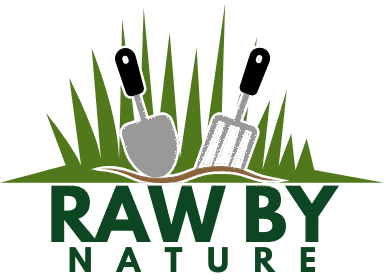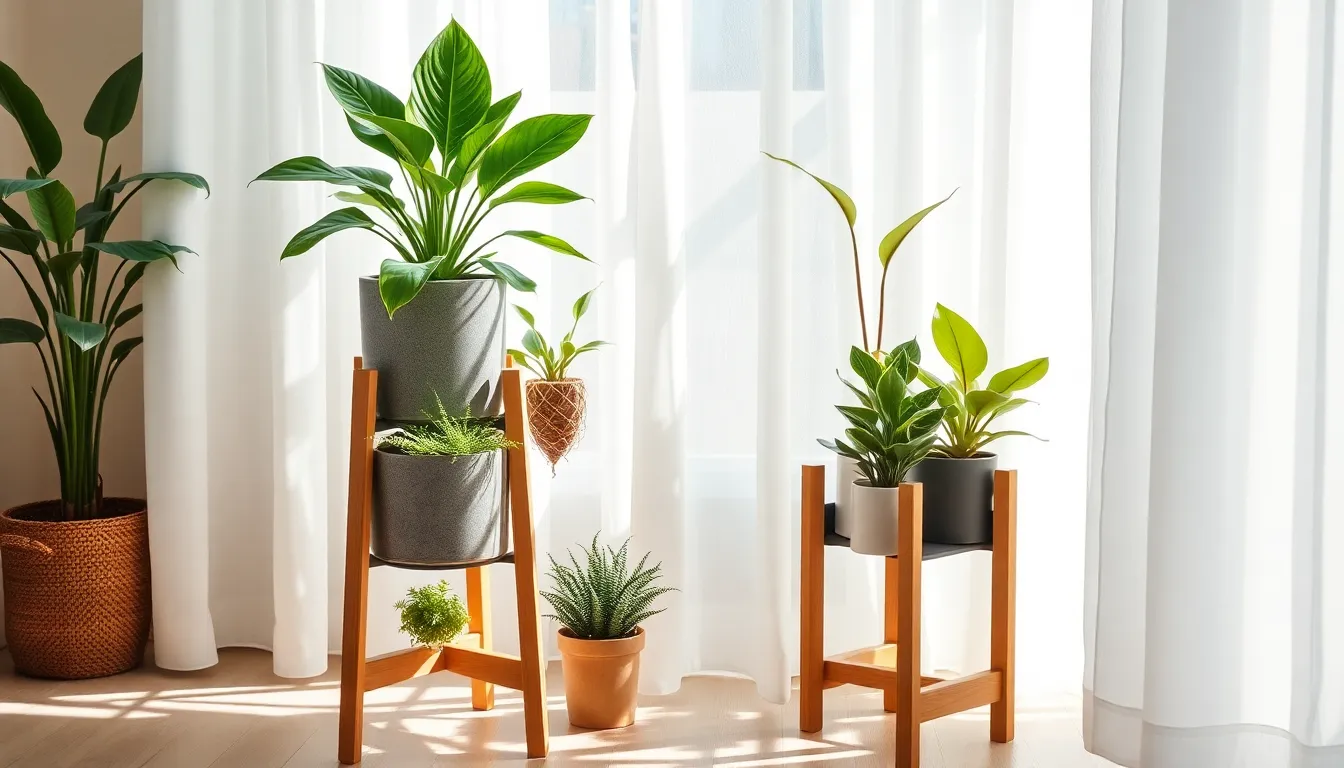Welcome to a world where lush greenery meets effortless elegance, all within the cozy corners of your home. Whether you’re just beginning your journey into gardening or you’re a seasoned plant whisperer, this guide to the best succulents for low-light conditions is your ticket to a thriving indoor oasis. Imagine the joy of nurturing a vibrant collection of succulents that thrive even in dimly lit spaces, turning any room into a haven of natural beauty.
In this guide, we’ve handpicked a selection of resilient succulents that are perfect for those shadowy spots in your home. These plants not only bring a splash of green but also require minimal care, making them ideal companions for busy lives or those new to the gardening scene. Discover the practical benefits of having these hardy succulents, from enhancing air quality to boosting your mood, all while demanding little more than an occasional sip of water. With our expert tips and your enthusiasm, you’re set to cultivate an enviable garden that defies the odds and flourishes in the shade.
Snake Plant ‘Moonshine’ (Sansevieria trifasciata ‘Moonshine’)
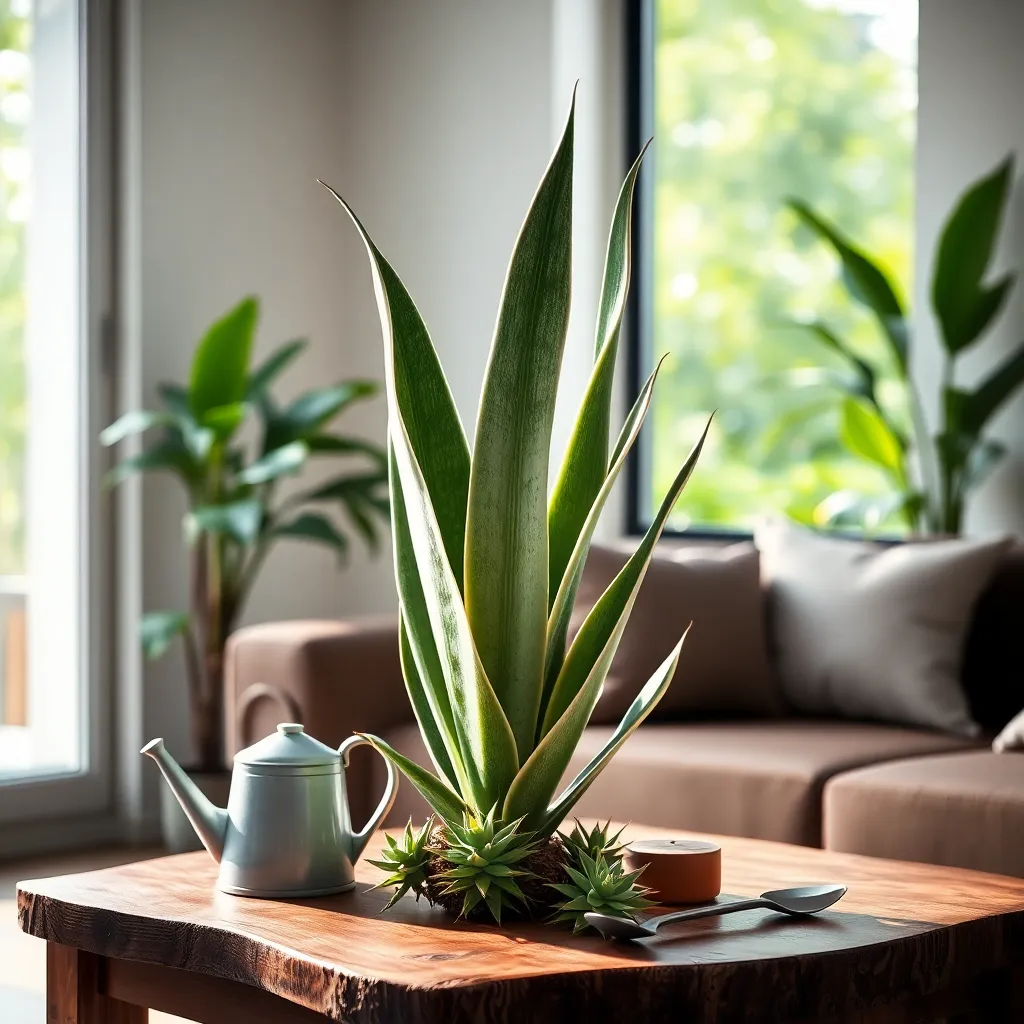
The Snake Plant ‘Moonshine’ is a striking variety of Sansevieria trifasciata, known for its broad, silvery-green leaves. Its unique color makes it a standout choice for anyone looking to add a touch of elegance to low-light spaces.
To grow a healthy ‘Moonshine’, ensure it is potted in well-draining soil, such as a cactus or succulent mix. This type of soil prevents root rot, a common issue for succulents if they sit in water for too long.
Watering should be done sparingly, allowing the soil to dry out completely between waterings. During the growing season, typically spring and summer, you may water every two to three weeks, while in the dormant months, reduce to once a month.
While ‘Moonshine’ thrives in low light, it can also tolerate brighter indirect light, which can enhance leaf color. Avoid direct sunlight as it may scorch the leaves, causing damage to the plant.
For those with more experience, consider rotating the plant occasionally for even growth and to maintain its symmetry. Fertilize with a balanced, diluted liquid fertilizer every couple of months during the growing season to support its health.
Ponytail Palm (Beaucarnea recurvata)
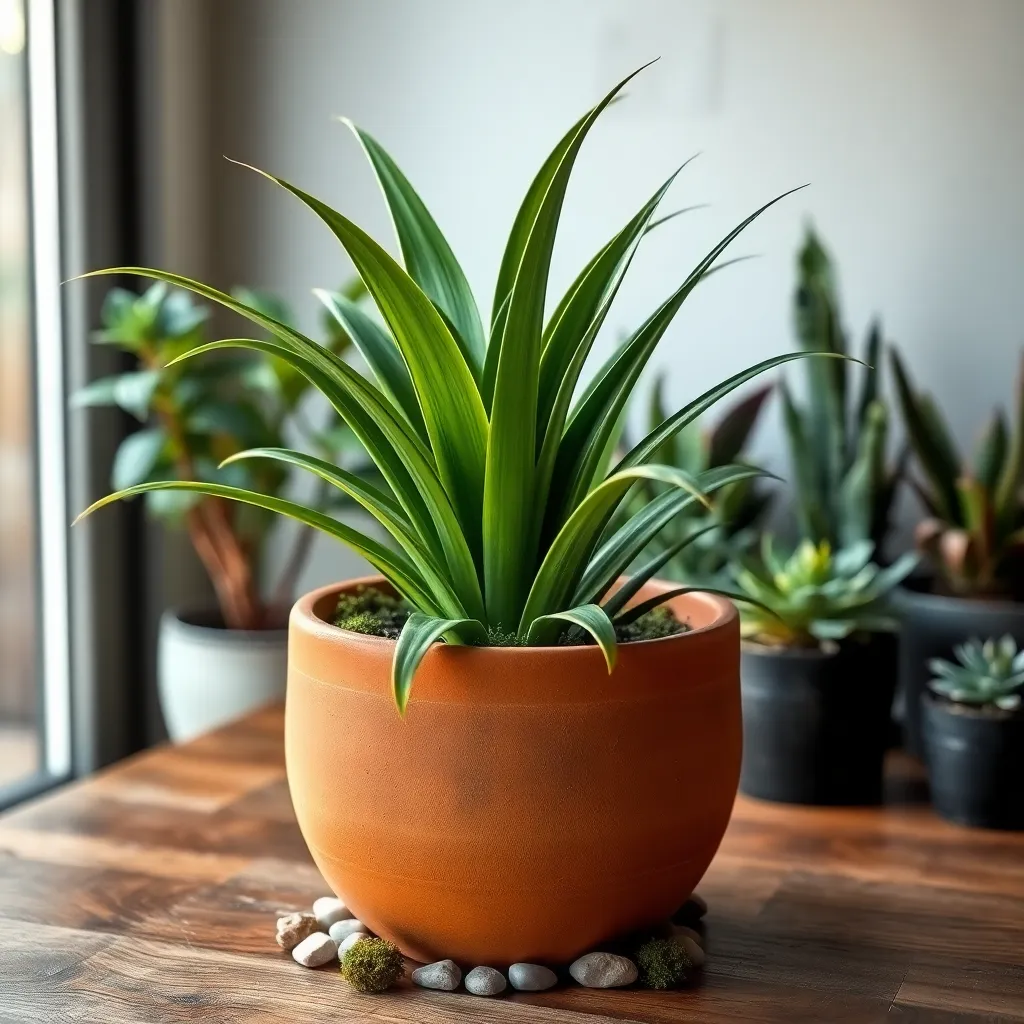
The Ponytail Palm (Beaucarnea recurvata) is an excellent choice for beginners, thanks to its forgiving nature and unique appearance. This plant thrives in low-light conditions, making it perfect for indoor spaces that don’t receive direct sunlight.
To keep your Ponytail Palm healthy, water it sparingly, allowing the top inch of soil to dry out completely between waterings. Overwatering is the most common issue with this plant, so it’s crucial to let the soil dry out to prevent root rot.
Opt for a well-draining soil mix, such as a cactus or succulent blend, to ensure proper drainage. A pot with drainage holes is essential, as it helps prevent water from pooling at the bottom, which can lead to root issues.
For advanced care, consider fertilizing your Ponytail Palm during the growing season, which is typically from spring to early fall. Use a balanced, water-soluble fertilizer at half strength once a month to promote healthy growth and maintain vibrant foliage.
ZZ Plant (Zamioculcas zamiifolia)
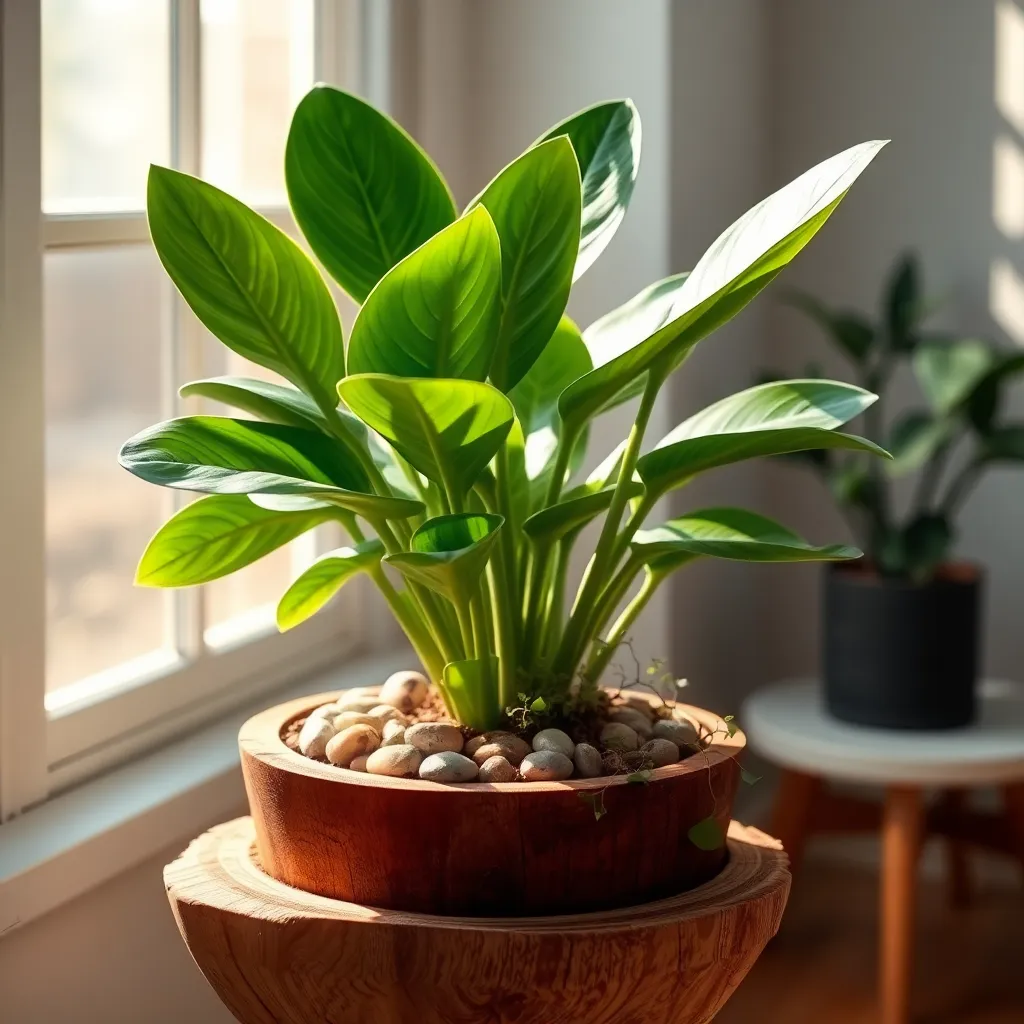
The ZZ Plant (Zamioculcas zamiifolia) is a fantastic choice for those who have limited natural light in their homes. This resilient plant thrives in low-light conditions, making it perfect for beginners who are just starting their indoor garden journey.
To successfully grow a ZZ Plant, use a potting mix that drains well, such as a blend of cactus soil and perlite. Watering should be infrequent, allowing the soil to dry out completely between waterings to prevent root rot.
Place your ZZ Plant in a spot where it receives indirect light, as direct sunlight can scorch its leaves. If you notice the leaves turning yellow, it may be a sign of overwatering—adjust your watering schedule accordingly.
For those looking to propagate their ZZ Plant, consider using leaf cuttings or division methods. Propagation is best done during the growing season, which typically spans from spring to summer, ensuring optimal growth and success.
String of Pearls (Senecio rowleyanus)
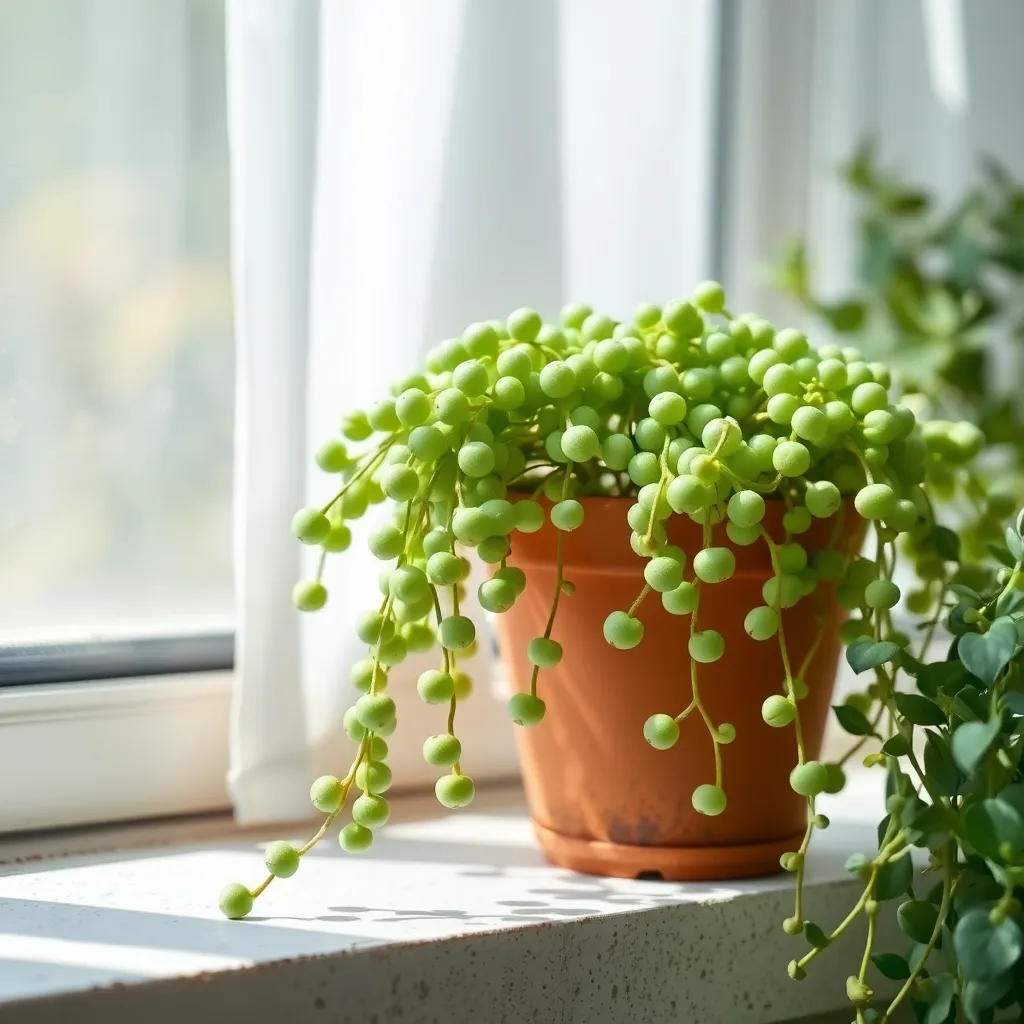
String of Pearls (Senecio rowleyanus) is a unique and captivating succulent known for its trailing stems adorned with pearl-like leaves. This plant is a great choice for beginners seeking a low-light succulent because of its adaptability and striking appearance.
For optimal growth, place your String of Pearls in a spot that receives indirect light, such as a north-facing windowsill. While it can tolerate low light, providing a few hours of bright, indirect sunlight will help it thrive and maintain its vibrant green color.
Watering is crucial for the String of Pearls, as overwatering can quickly lead to root rot. Allow the soil to dry out completely between waterings, and ensure your pot has excellent drainage to prevent standing water.
Use a well-draining cactus or succulent soil mix to keep the roots healthy and aerated. For an advanced tip, consider adding perlite or pumice to the soil mix to enhance drainage further, especially in humid climates.
Gasteria ‘Little Warty’ (Gasteria bicolor var. liliputana)
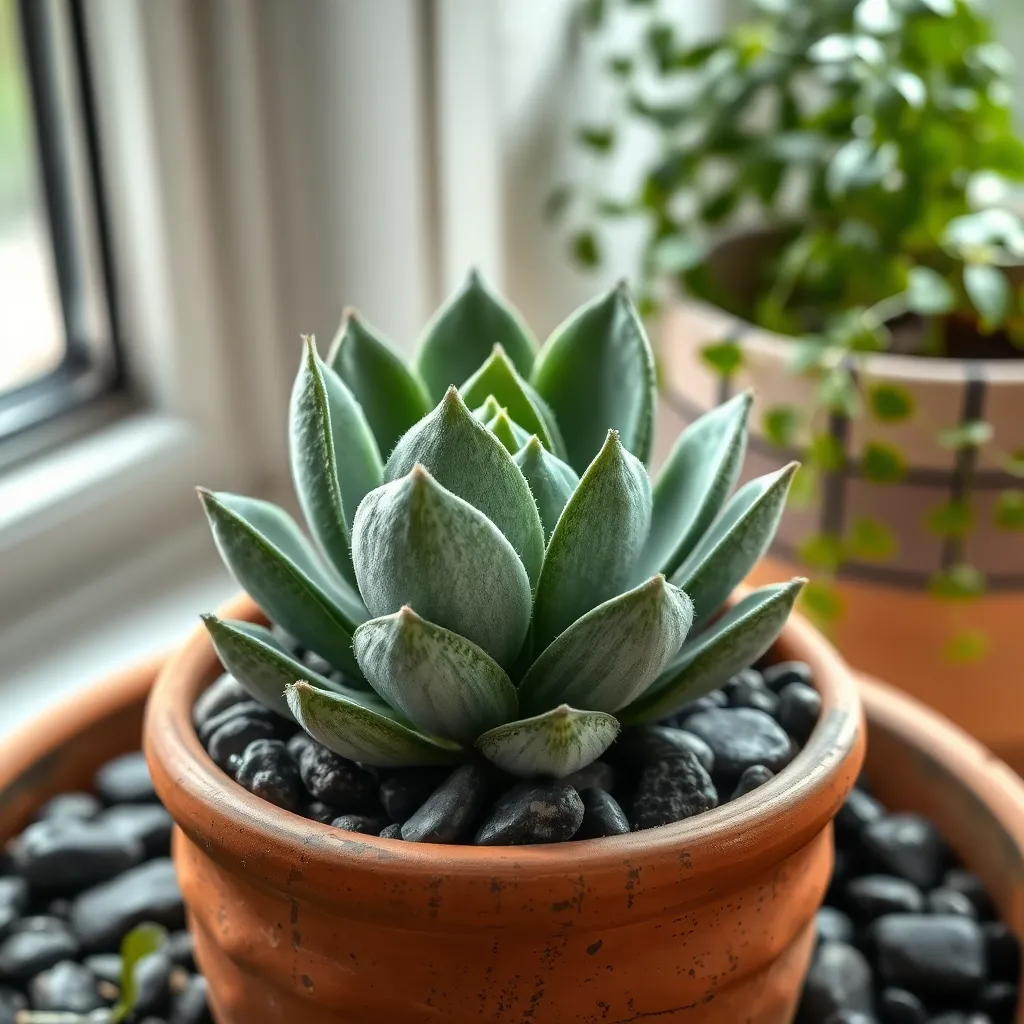
Gasteria ‘Little Warty’ (Gasteria bicolor var. liliputana) is a perfect low-light succulent for beginners. This plant thrives in indoor settings with indirect sunlight, making it ideal for homes with limited natural light.
To care for your Gasteria ‘Little Warty’, use a well-draining potting mix, such as a cactus or succulent soil. Water sparingly, allowing the soil to dry out completely between waterings, which typically means watering every 2-3 weeks.
Its unique textured leaves are not only attractive but also quite hardy. Fertilize sparingly during the growing season—once a month with a balanced liquid fertilizer diluted to half-strength is sufficient.
While it’s a resilient plant, proper airflow and minimal humidity are important to prevent rot. Consider placing it near a fan or in a room with good air circulation to keep it healthy and thriving.
Conclusion: Growing Success with These Plants
In exploring the ‘Best Succulents for Beginners in Low Light,’ we uncovered five vital relationship insights: nurturing patience, understanding individual needs, providing consistent care, embracing adaptability, and fostering growth in challenging conditions. Just as these hardy plants thrive in seemingly unfavorable environments, so can your relationships flourish when you commit to these principles. As your actionable next step, choose one relationship in your life that needs a little more sunshine and give it the attention it deserves today—whether it’s a thoughtful message or a small act of kindness.
Before you move on, make sure to bookmark this article as your go-to guide for nurturing relationships amidst life’s shadows. Having this resource at your fingertips means you’ll always have a reminder of how to care for relationships, even in the low-light moments.
Remember, the journey of cultivating strong, resilient relationships is ongoing. As you apply these concepts, you’re setting the stage for lasting success and deeper connections. With each step forward, you’re not just tending to relationships; you’re creating a garden of enduring love and support. Save this article now and watch your relationships, like succulents, thrive against all odds.
